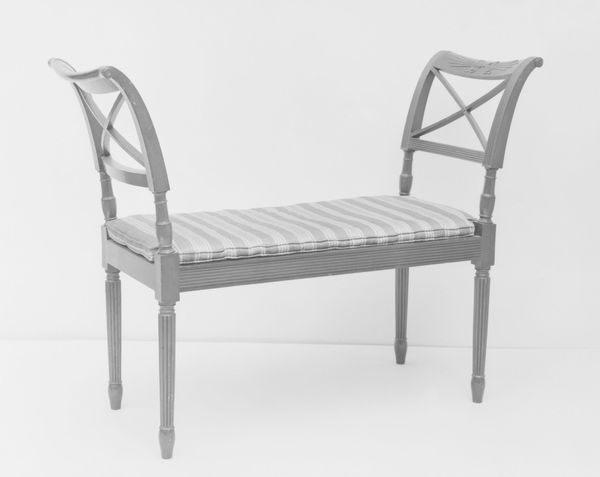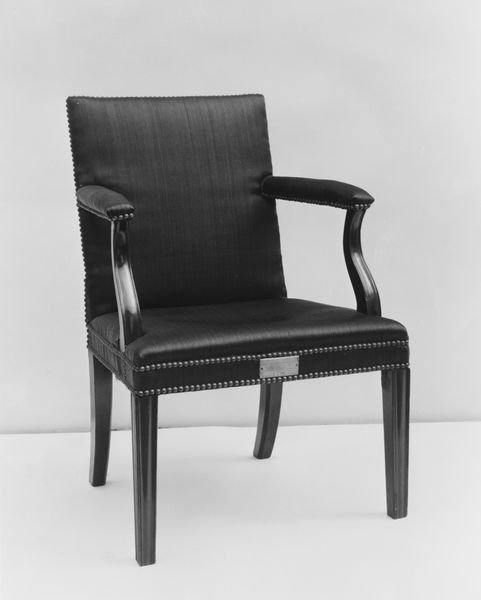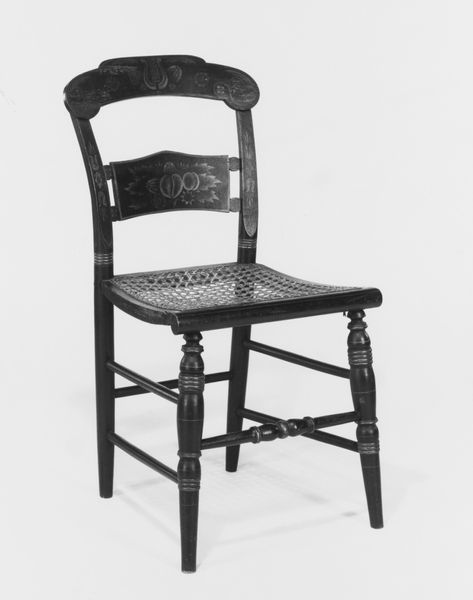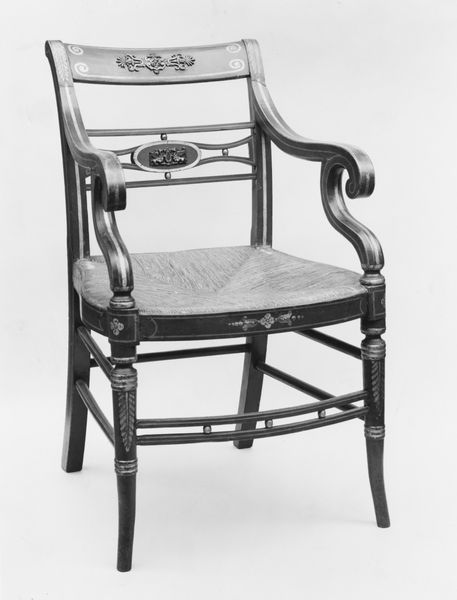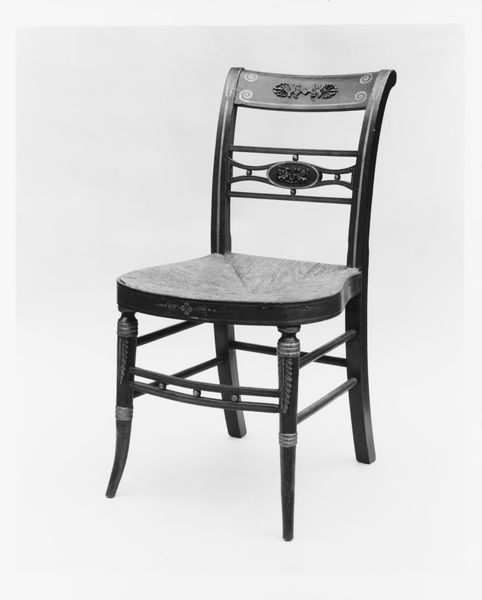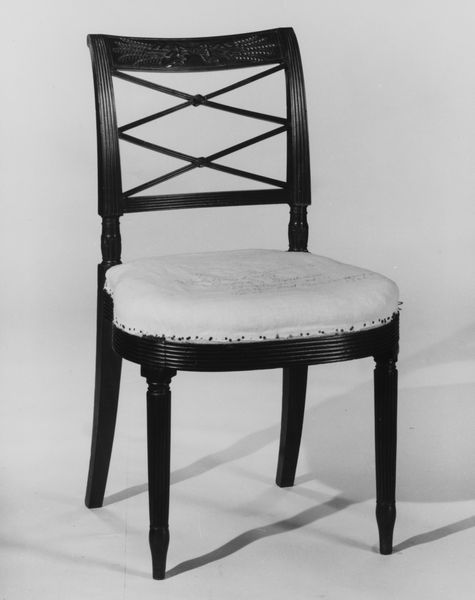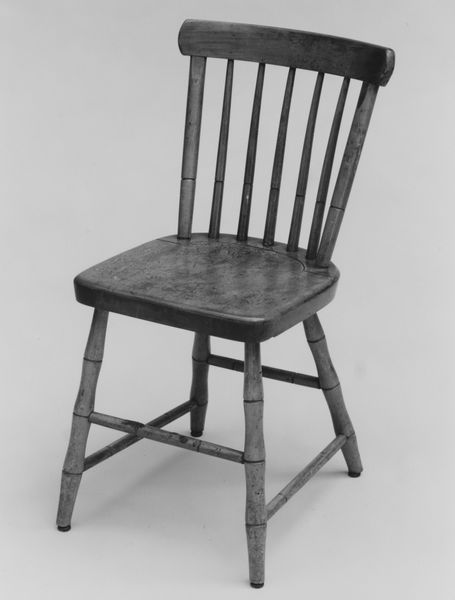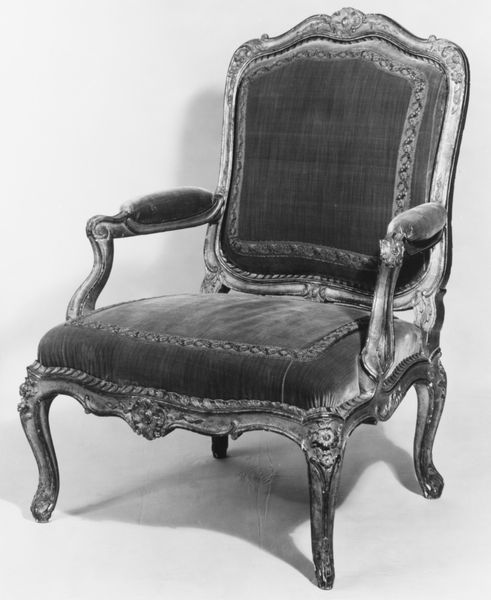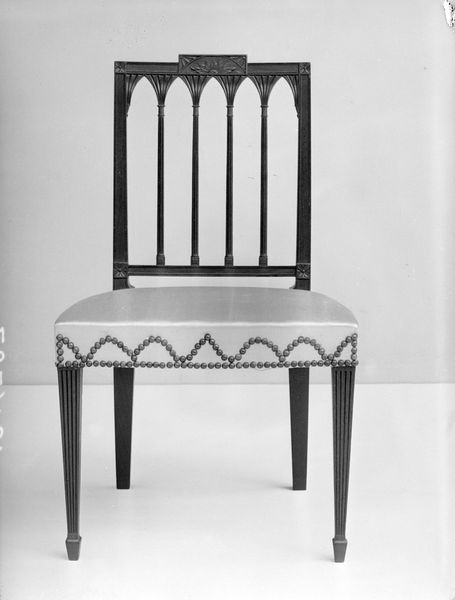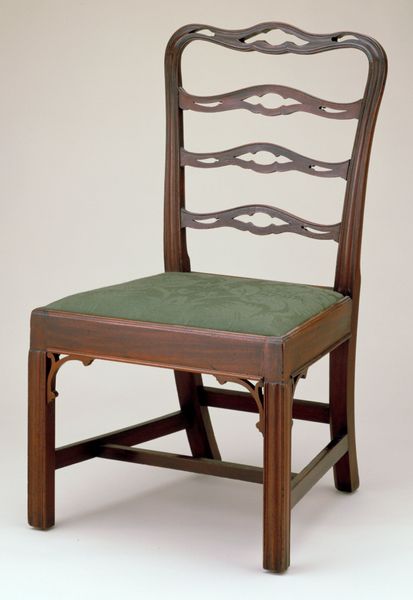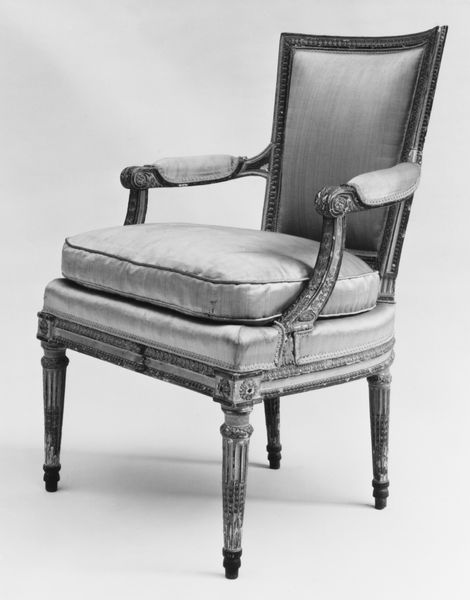
wood
#
portrait
#
neoclacissism
#
furniture
#
united-states
#
wood
#
decorative-art
Dimensions: 32 1/2 x 42 x 15 1/8 in. (82.6 x 106.7 x 38.4 cm)
Copyright: Public Domain
Editor: This object, crafted sometime between 1805 and 1815, is titled *Window Stool*, and was fashioned by Duncan Phyfe. It resides here at the Metropolitan Museum. There's something so understated and elegant about this stool – I can picture it perfectly in a light-filled room overlooking a garden. It also strikes me that this utilitarian object is also very much a piece of sculpture. What do you make of it? Curator: Oh, I love that! Yes, a sculpture disguised as seating. For me, it’s all in those little details. Like how the reeded legs just barely echo the curves of the back supports. I think of Phyfe as being deeply intuitive. The wood seems to have flowed through him. Do you see how he's tamed the wood to create this form that’s so simple, but also, somehow…unfolding? Editor: Unfolding...That’s a great word for it. I hadn't quite seen it that way. It's like a flower! And those little carved details at the crest - a little flourish. Is that characteristic of the Neoclassical style? Curator: Absolutely. Remember, Neoclassicism was all about order and rationality, so those controlled curves, and simplified, almost severe lines speak directly to that ethos. But within those bounds, he’s allowed these incredibly human touches. The overall impact is strangely…personal, isn't it? I can almost imagine sitting there myself, perhaps watching for a beloved to arrive! Does it conjure a narrative for you, too? Editor: It does now! And it feels quintessentially American too. Sort of a restrained exuberance. Thank you, that was really insightful. Curator: My pleasure! Art always opens to those who lean in and imagine. I've come to understand that pieces speak when the viewer is patient, and most importantly, vulnerable.
Comments
No comments
Be the first to comment and join the conversation on the ultimate creative platform.
